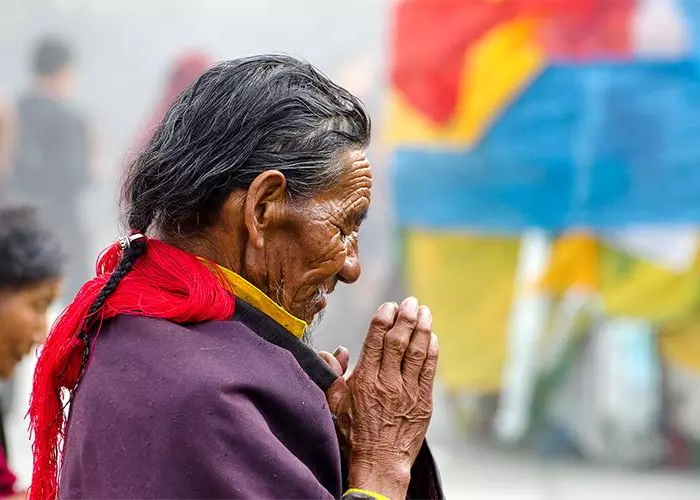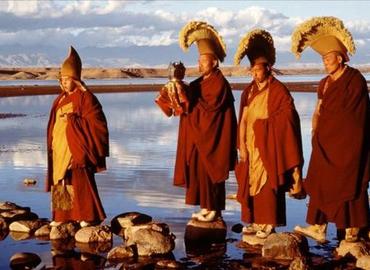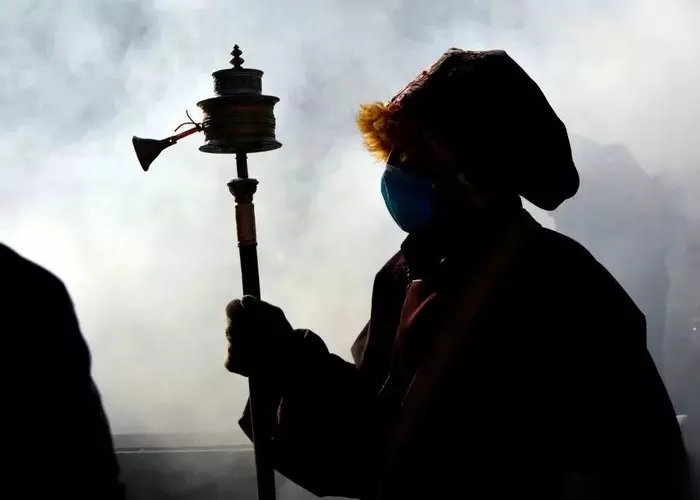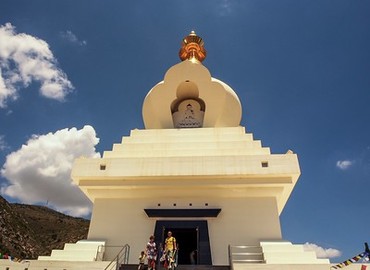Tibetan Sky Burial Custom
- Liffity
- Last Updated : 07/29/2025
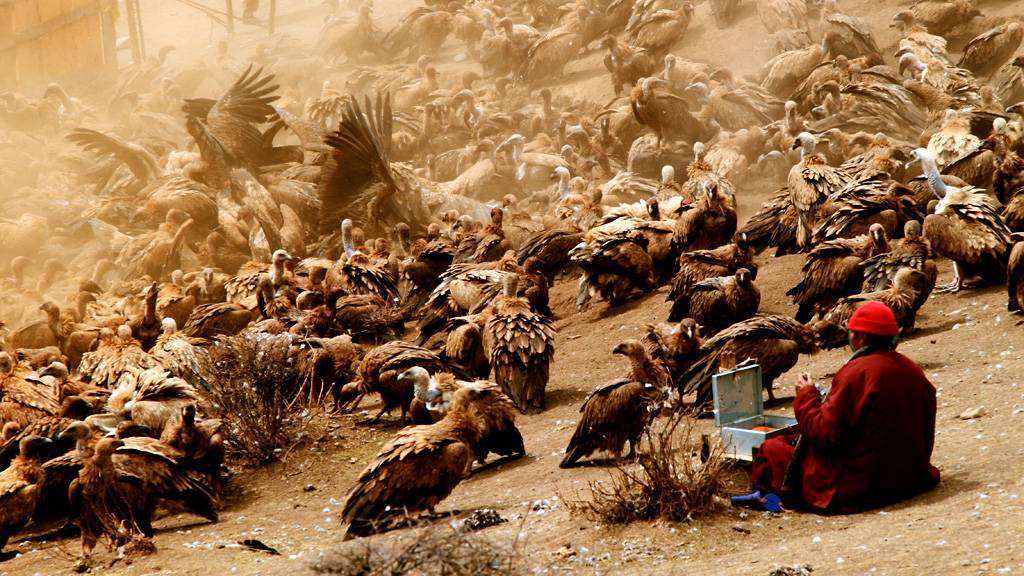
Sky burial is a Tibetan custom whereby people dispose of the corpses of their loved ones. This death ritual entails taking the body to a designated site in the mountains where it is left to feed vultures. The Buddhists in Tibet believe that the soul is immortal and death is only the beginning of a new life. Instead of letting the body vanish naturally, it is better for almsgiving to another kind of life and liberates the soul from the body enabling it to gain entry into rebirth. The method is widely used by common Tibetans.
Content Preview
The Tibetan Sky Burial Process
As this is a very important Buddhist custom, every step has to be undertaken according to the Buddhist burial laws. The following are the steps followed during the Sky Funeral Service:
Preparation
The Tibetans treat the body of the dead with respect as they try to facilitate a clear transfer of the soul from the body. After death, the body is wrapped carefully with a white traditional cloth. The body is then laid in a cleaned corner in the house where the dead person used to live. According to tradition, the body is not to be disturbed as this might interrupt the souls' transition into rebirth.
The body remains in the house for at most five days after which it should be disposed off. During this period, the family invites the monks or the Lamas who read the Holy Scriptures to the dead. It is believed that the reading expels the soul from the body and cleanses it from worldly sins.
Body Disposal
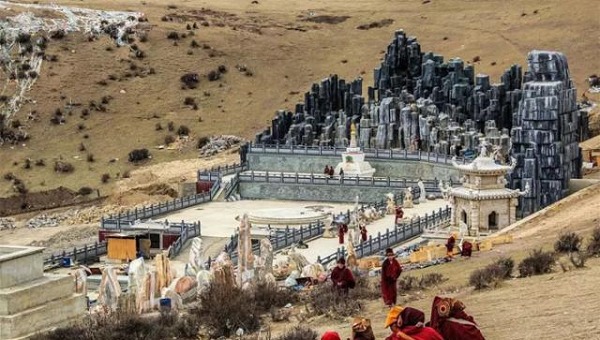 The final step of laying the soul to rest is feeding the body to the vultures. The vultures are believed to be holy birds in Tibet as they only devour dead creatures. The family of the dead, therefore, selects a day for the sky burial, calling it a ‘ lucky day.'
The final step of laying the soul to rest is feeding the body to the vultures. The vultures are believed to be holy birds in Tibet as they only devour dead creatures. The family of the dead, therefore, selects a day for the sky burial, calling it a ‘ lucky day.'
Several things happen on the Lucky day. The body is unwrapped and bent into a fetal position to symbolize rebirth into another world. The body carrier is then called upon to take the body to the burial site.
The burial site is usually located in the mountains away from the residential areas. The carrier deposits the body of the dead, usually, there are several in number, at the burial site and uses mulberry smoke to attract the starving condors and vultures. The Lamas offer prayers as the vultures devour the corpses.
Sky Burial and Tibetan Buddhism
The practice of sky burial is related to the rise of Tibetan Buddhism and the influence of Indian culture. It was brought by the Indian monk Tamba Sanjee to Tibet around the end of the 11th century. He advocated this kind of burial custom and personally went to the celestial burial platform to recite sutras for the dead. He promoted that this was a merit of imitating Sakyamuni's sacrifice and feeding tigers, which can redeem the sins of one's life and benefit the reincarnation of the soul. It's recognized by the Tibetans and came into being a custom intertwined with Buddhist beliefs.
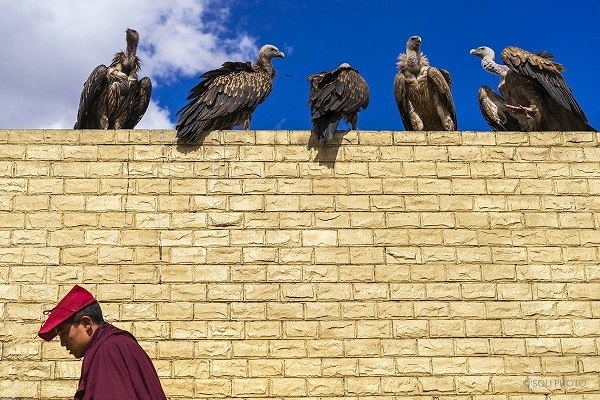 In the Tibetan culture, it is believed that the Vultures are holy birds. Unlike other birds of prey such as eagles and hawks, vultures do not kill their prey. They wait until the animal dies before descending on it. Therefore, vultures are called Dakini in Tibetan, which means female deities walking in the air. Regarding sky burials, Tibetan Buddhism believes that lighting mulberry smoke is to pave a colorful road and invite the Dakini to the sky burial platform respectfully. The corpse is used as an offering to worship the gods, praying to redeem the sins of the deceased while alive and asking the gods to bring their souls to reincarnation.
In the Tibetan culture, it is believed that the Vultures are holy birds. Unlike other birds of prey such as eagles and hawks, vultures do not kill their prey. They wait until the animal dies before descending on it. Therefore, vultures are called Dakini in Tibetan, which means female deities walking in the air. Regarding sky burials, Tibetan Buddhism believes that lighting mulberry smoke is to pave a colorful road and invite the Dakini to the sky burial platform respectfully. The corpse is used as an offering to worship the gods, praying to redeem the sins of the deceased while alive and asking the gods to bring their souls to reincarnation.
During the sky burial ceremony, if the vultures immediately rush to the corpse and eat up soon, it is the most auspicious sign. It means that the dead have no more sin and the rebirth of life will begin again. The dead should have attained all the merits and virtues. If it has not been eaten up, on the contrary, it means that the deceased has committed a major sin during his lifetime, and the soul is difficult to get into reincarnation. The family members will be particularly painful and uneasy. They would burn the remains in the presence of Lamas and monks who bless the spirits of the dead through prayers and chants. The chants are meant to free the spirit of the dead from the body and cleanse it of all its sins.
Taboos of the Tibetan Sky Burial
Tibetan sky burial, as a traditional funerary practice, has strict taboos and regulations. Firstly, there are three categories of people who are not allowed to undergo sky burial: elderly people over 90 years old or children under 10; those who have committed crimes such as murder, arson, or suicide by jumping, as well as those who suffered from contagious diseases; and additionally, people who formerly worked as blacksmiths or butchers. Aside from these special groups, others may undergo sky burial. The practice does not distinguish between rich or poor, high or low status.
During the sky burial ceremony, strangers are strictly prohibited from approaching the burial site, as their presence may disturb the deceased’s soul in the "Bardo" state, affecting its smooth reincarnation. Moreover, the deceased’s family members do not participate in the ceremony to prevent the soul from lingering in attachment to the earthly world, which could hinder its entry into the cycle of rebirth. To show respect and avoid disturbance, it is strongly advised that outsiders do not visit or watch the sky burial ceremony without permission.
Sky Burial Video
Normally, it's very sad to hear about the death of one's relatives. Beyond all people's expectations, the celestial burial master finishes the whole process with a smile and laughter. Tibetans believe that keeping a good mood can get rid of the darkness of the dead and guide them to reincarnation.
Here is a short sky burial video that may help you know more about it.
Sky Burial Platforms in Tibet
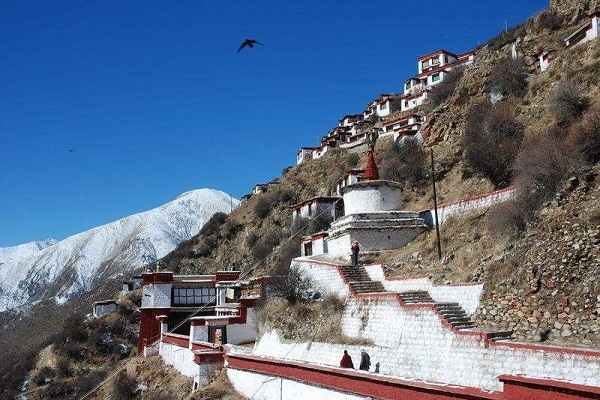 At present, there are several big sky burial platforms in Tibet. The Most famous sky burial platform is Drigung Til Monastery which is situated in Maizhokunggar County; other famous ones still perform sky burial including Samye Temple which is situated in Lhoka and Sera Monastery which is situated in the outskirts of Lhasa. Larung Gar Buddhist Academy is also a very famous celestial burial platform in the Tibetan area, which is located in Sertar County.
At present, there are several big sky burial platforms in Tibet. The Most famous sky burial platform is Drigung Til Monastery which is situated in Maizhokunggar County; other famous ones still perform sky burial including Samye Temple which is situated in Lhoka and Sera Monastery which is situated in the outskirts of Lhasa. Larung Gar Buddhist Academy is also a very famous celestial burial platform in the Tibetan area, which is located in Sertar County.
Among the three sky burial platforms, Drigung Til Monastery's sky burial site is the tallest and largest, almost as high as the towering Drigung Til Monastery. In Tibetan, it means the place of eternal life. Legend has it that the founder of Drigung Til Monastery, Jigten Sumgon, announced to the world before he passed away "I have received God's revelation to build a celestial burial platform in Drigung Til Monastery. The corpses sent here can directly enter the celestial realm and become immortal...
Other Funeral Rituals in Tibet
Apart from the mentioned sky burial, there are some other funeral rituals in Tibet, such as stupa burial, fire burial, water burial, earth burial, tree burial, and cliff burial, which are deeply influenced by the Bon Religion and Tibetan Buddhism. What kind of funeral ritual should be taken depends on the class and divination of the Lamas.
Stupa Burial
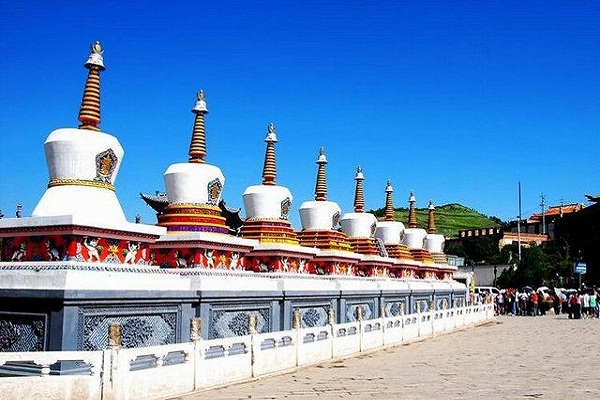
As the holiest funeral ritual, stupa burial can only be taken by the Dalai Lama, Panchen Lama or the Living Buddha. The body of the respectable Lama will be dealt with in a special way that cannot be broken down easily. Sometimes, the body will be covered with gold and saffron. At last, the body will be put into the stupa. The material of the stupa stands for the class of the Lama.
Water Burial
Water burial is another way to deal with the body. Different places have different views about water burials. Some people regard it as a way to deal with the lower class. While some people regard it as a holy funeral ritual like a sky burial.
Fire Burial
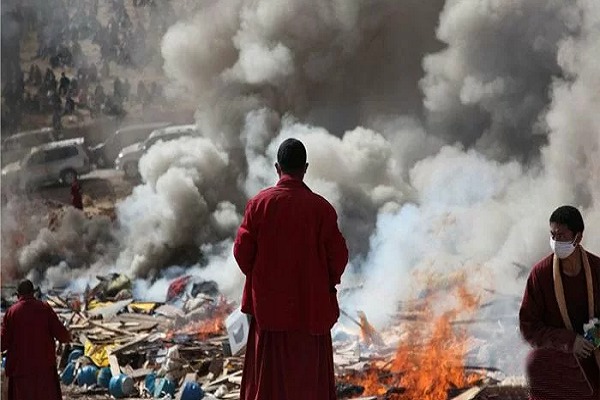
Fire burial is always used for monks and aristocrats. The body will be burnt on the wood, and the ashes of the body will be put in a jar. The family member can take it home and bury it. Sometimes, it will be scattered in the river. However, the ashes of the holy Living Buddha will be collected in a small tower with lots of precious deposits.
Tree Burial
If a child is dead, Tibetans will take this way to deal with the body. This way is mainly used in Nyingchi Prefecture, Tibet. The family will place the child's body in a wooden box. In case of being seen by others, the box will be transferred to a far area with dense trees.
Earth Burial
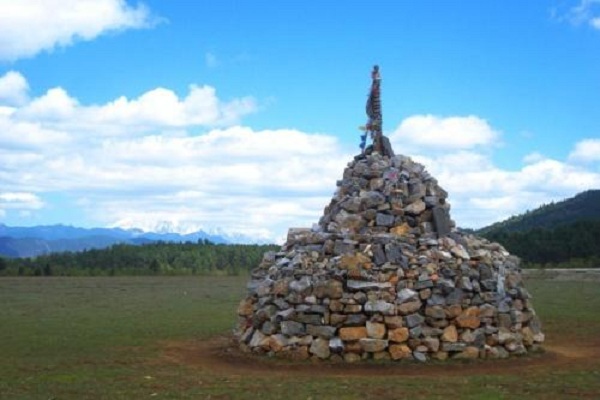
Earth burial is lower than the burials mentioned before. In the past, earth burial was very popular among Tibetans before the introduction of Buddhism. But after that, the earth burial was replaced by the sky burial. The earth burial is regarded as a lower way to deal with the dead person who is died of illness, or killed by murders. Therefore, the dead body is not clean enough to feed the vultures. Only in this way, the dead body can get rid of the illness, and go through difficulties in hell.
Cliff Burial
The last burial way is to place the body in a cave on a cliff. This burial way is mainly used in the south of Tibet. The height of the cave is about hundreds of meters.
Email response within 0.5~24 hours.


